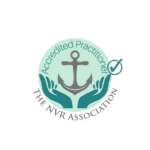Sibling Rivalry: A Curse or a Blessing.
My children are continuously teasing each other and fighting? Is this normal? Am I alone in this?
Of course, you are not alone! Sibling rivalry is an inevitable consequence of having more than one child. The ‘happy home’ can frequently descend into a battleground that leaves exhausted parents questioning where they have gone wrong. The simple answer is, they haven’t – children in close quarters will provoke their peers in many ways!
Children learn for sibling rivalry.
It helps to know that what is happening here is a ‘socio cognitive conflict’, (socio relating to the people/peer interaction and cognitive the thinking/problem solving part of the brain) and if parents can understand that these ‘battlegrounds’ lay the foundation for developmental learning of, not only conflict resolution skills, but also developing a capacity for empathy that will equip our children with tools for life, taught in a safe, loving environment.
What makes them do it?
Many reasons, it can be to get attention from you, a sense of power, boredom, connect with siblings, physical contact, even to become the ‘favoured one’ by stirring things and making their sibling look bad! It can be how children learn to test boundaries.
Can it be eliminated?
Whilst sibling fighting will never be 100% eliminated, we can guide them to find healthier ways to resolve their differences and have their needs met. The all-important boundaries exist to help teach children how to deal with power struggles; to be assertive and stand up for themselves; to negotiate and compromise and to see things from another perspective.
Factors that influence Sibling Rivalry.
Some understanding of the factors that influence sibling rivalry can allow parents to approach the issue from a more sensitive and empathetic standpoint.
Birth order for one thing, can have a huge impact on your child, just as our own birth order has on us. Though not an exact science, it can be a useful exercise to reflect on the impact your own birth order has on you as an adult to see things from the child’s perspective. First-borns tend to align themselves with the decision-making parent, interested in results and productivity, often perfectionist, reliable, responsible, well organised, and serious. Second born identifies closely with the more emotional parent, creating a need to belong, they can be emotional, conflict avoiding, mediators, independent and very loyal to their extensive friends’ group. Third born/youngest tend to relate in pairs in the family, be it both parents or two siblings. They like to maintain balance in relationships, they can present challenges and are often the ‘lovable rogue’ in the household, quietly causing the trouble, but winning affection with charm, humor, and manipulation!
The Centre for Parenting Education:2019
Although birth order is highly significant, it is far from the only factor to be considered. Spacing of siblings can affect the intensity, with siblings closer in age and developmental stages more like to compete; temperamental differences, with one child easier to ‘wind up’ than or by another; gender, sometimes boys and girls can be treated differently; physical influences such as hunger, tiredness, illness; times of big change, whether it’s a family breakup, new partner for either parent, house move and countless other significant events all take their toll and can result in sibling conflict. So, as we can see, it is inevitable!
So, when do you intervene?
Getting a sense of when and how to get involved can be fundamental to teaching your children basic conflict resolution skills. Implementing a ‘green to red light’ warning system can assist here:
Green light: normal bickering, minor name calling – leave them to it!
Yellow light: borderline, nasty name calling, mild physical contact, threat of danger – acknowledge the situation and get children to reflect on each other’s point of view. Get them to use ‘I’ and ‘me’ to put forward their own point of view and their own role in the conflict and after both sides have had their turn, try asking them to see what the solution might be.
Orange light: this is moving into the danger zone of physical fighting. – Is it play or real? Let us stop and review the rules. Stay neutral whilst encouraging them to speak, one at a time, using ‘I’ and ‘me’ and again, ask what solution there might be.
Red light: this is now at a dangerous physical or emotional level. – Step in and separate them. If a child is hurt, deal with that situation first, then try to get them again to speak, one at a time, from an ‘I’ and ‘me’ perspective and to explain to the other sibling what the issue is and to listen when it’s the other child’s time to speak. Let them know that they each have a viewpoint, but they need to take responsibility for their part and if required, work together to come up with a win-win solution to resolve the conflict (https://picklebums.com/win-win-solutions/)
Visual tool:
Here is is an example of a visual tool you can use to support your intervention for visual learners, younger children, and children with special needs. Go a step further enjoy an arts and crafts session with you children, get them to draw/print a similar visual support tool as above or let them choose from a multitude of similar tools on google images/print them cut them out paste on cardboard/laminate and place in prominent place at eye level (children’s) so they will act as a visual reminder of rules, consequences to support emotional regulation and appropriate behaviour.
What can I do to reduce the fighting and teasing?
- Be proactive…open the discussion with children re fighting:
- Decide as a team what is acceptable and what is not.
- Teach them to manage strong emotions
- Get the children to agree a list of fair fighting rules.
- Work with them to decide on the consequences for breeches of the rules.
- Teach problem solving and conflict resolution skills.
- Quality time with children
- Teach children from a very young age to structure their day with visual schedules/timetables/diaries/phone apps.
- Tasks and jobs around the home reduce boredom.
Benefits of working with children to manage sibling rivalry.
Tremendous benefits can be gained from having the discussion with the children, devising fair fighting rules, giving them visual supports, involvement then in generating the consequences for breeches and helping them draw or print own visual support tools.
- Reduced arguments in the home.
- Quieter children less likely to be bullied.
- Children learn to be assertive and speak up.
- Children learning skills for life – conflict management.
- Children will be more confident dealing with conflict and problem-solving situations in life increasing their resilience.
- It will give them a Non-Violent Resistance approach to managing conflict in relationships in all life contexts e.g. marriage, parenting, work, college.
- Children learn that every choice they make in life can have negative or positive impact for them, so they learn to weigh up the pros and cons, think before they act and choose wisely.
- Better communication that leads to improved relationships.
- Teaches children to negotiate, compromise and to see things from another perspective.
Implementing choices and consequences:
We need to ensure that any such consequences are in proportion with the ‘crime’ and are age relevant. Younger children need immediate consequences, such as, ‘Well the TV is going off now for 30 minutes’, whereas withdrawing permission to go to the cinema at the weekend may be the appropriate consequence for an older child. Get the children to define what is not acceptable and what the consequences will be for breeches.
Other strategies for managing sibling fighting.
Family rules and boundaries can guide children through the various developmental stages, as charted by Erik Erickson, whilst introducing structures, personal responsibility and autonomy equip a child with life skills to carry them through these stages.
Structure: Many of us would find day-to-day functioning without a diary difficult, the same principle applies for children. Work out a schedule builder that will show a child how their day is going to be structured. Use a visual plan with photos for younger kids or children with special needs. Let them see when they will have breakfast; phone their granny; play with friends, etc.
And for example with teenagers, let them know that they will be expected to do some chores around the house and in garden (agree in advance their tasks and times for completion) they will need to schedule in study time, time for friends, time for social media, time for sports etc.
Keeping children occupied and structured reduces boredom and builds a sense of purpose all essential ingredients for good mental health. It also reduces the temptation and time for getting involved in conflict with their brothers and sisters.
Establishing family rules and sitting down to family meetings affords the opportunity for everyone to be heard; for reminders that there are choices and consequences; that physical violence or breaking things is unacceptable and it also creates a tremendous line of communication that can transfer through to the 1:1 relationships.
Individual quality time can be created with each of the children, be it 10 minutes reading before bed, or just sitting listening to them. Actively listening to the children and reflecting back what they are saying asking questions to elicit more information and refraining from giving advice and trying to “fix things” so they know they are being listened to is very powerful, especially with teenagers.
These strategies all serve to instill a sense of confidence in our children, teaching them life skills that will help them grow into caring, responsible, conflict solving adults who take responsibility for their own actions and have an empathetic ability to see the other person’s point of view. How wonderful!
Margaret Gilbert
Professional Life Change and Parent Coach
@ changingtracks4life.com
Tel: 0871747813 Email/Whatsapp: gilbertmlifecoaching@gmail.com




